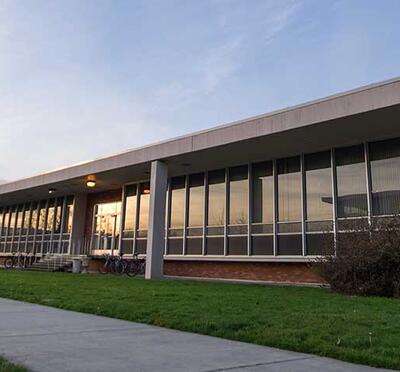At Intel Labs in Hillsboro, research scientist Soumya Bose, Ph.D. electrical and computer engineering ’19, develops circuits to speed up optical data communications while reducing the amount of power they need.
Optical links are already capable of quickly moving enormous quantities of data within and between computer networks. But still faster links will be needed to handle the world’s incessant demand to move and process data. Higher speeds, though, come at the cost of greater energy consumption, which quickly adds up in the hundreds of giant data centers around the world.
“The high-speed, power-efficient optical links of the future will enable higher data transfer and computing capacities per unit of energy,” Bose said. “Among other things, this will enable advanced data training and analysis capabilities in applications such as machine learning and artificial intelligence.”
For example, new machine learning methods designed to process large datasets of neural recordings could revolutionize neuroscience by providing new insights into the workings of the human brain.
High-speed optical data links are widely used for transmitting data between servers. But within servers themselves, data transmission is predominantly done electrically. At higher data rates, electrical links are less energy-efficient and more prone to errors.
“My work, and our research at Intel Labs, focuses on bringing optical communication closer to the processor itself,” Bose said. He added that converting to optical communications at the level of computer circuit boards and chips will result in faster, more accurate data transfers between core processors and peripheral storage devices.
Bose’s doctoral work included building energy-efficient circuits that enable portable biomedical sensing devices to operate on minuscule amounts of power generated by converting body heat into electricity.
“The voltage from the transducers ranges from tens of millivolts to a few hundred millivolts, which is not enough to power an integrated circuit,” Bose said. “The fundamental challenge was to run semiconductors at a very low input voltage.” Bose’s solution was a new circuit architecture that started operating with only 50 millivolts. It then amplified the voltage enough to sustain long-term operation.
Bose is the lead inventor on a patent for technology related to ultra-low-voltage circuits, as well as on a patent application for a wearable, batteryless heartbeat monitor designed to continuously gather data about a patient’s heart health. These patents also include College of Engineering faculty Matthew Johnston, associate professor of electrical and computer engineering, and Tejasvi Anand, assistant professor of electrical and computer engineering.
According to Bose, Oregon State University was an excellent training ground.
“Doing my doctoral work at the College of Engineering really helped me get to where I am now,” Bose said. “It’s a vibrant program where I had an opportunity to meet leaders in the field of circuit design, and I was able to work alongside great researchers on high-impact work.”




